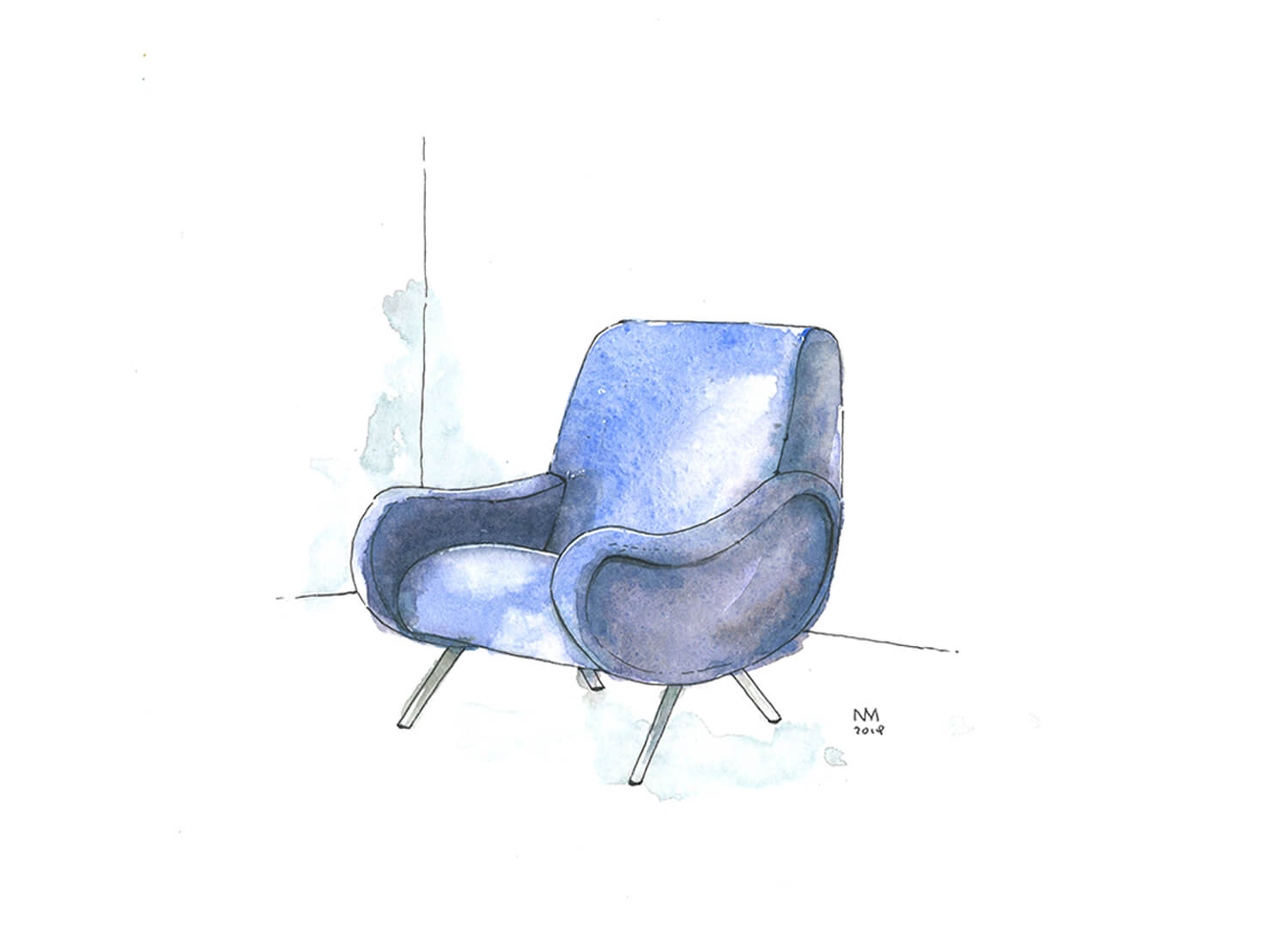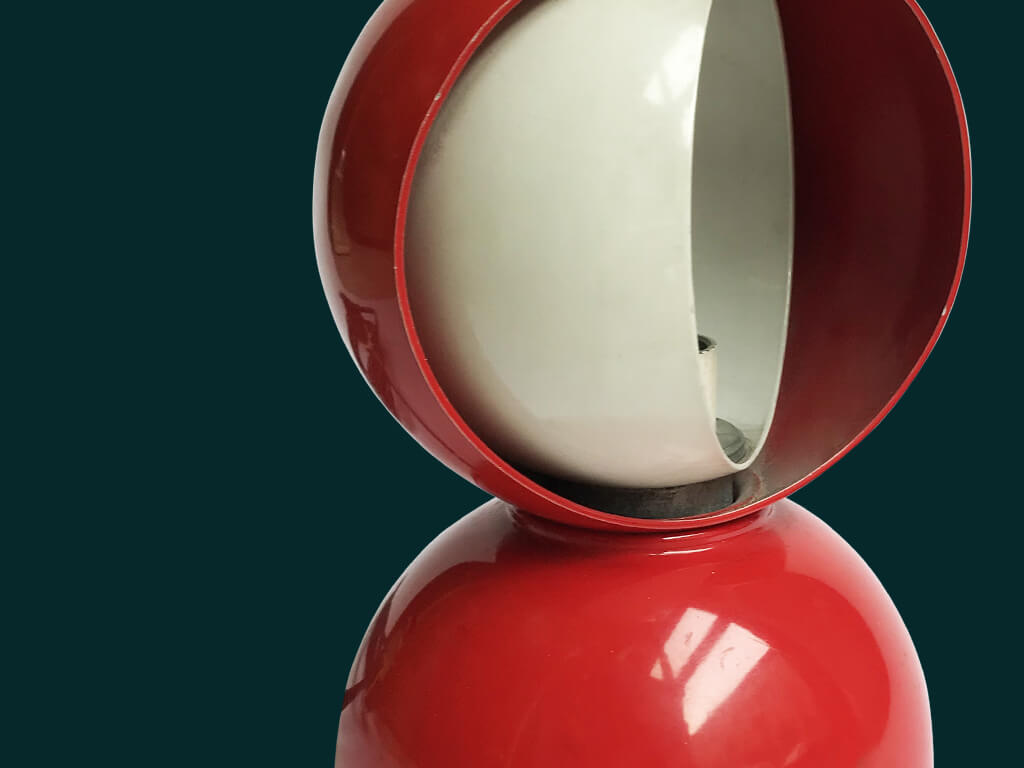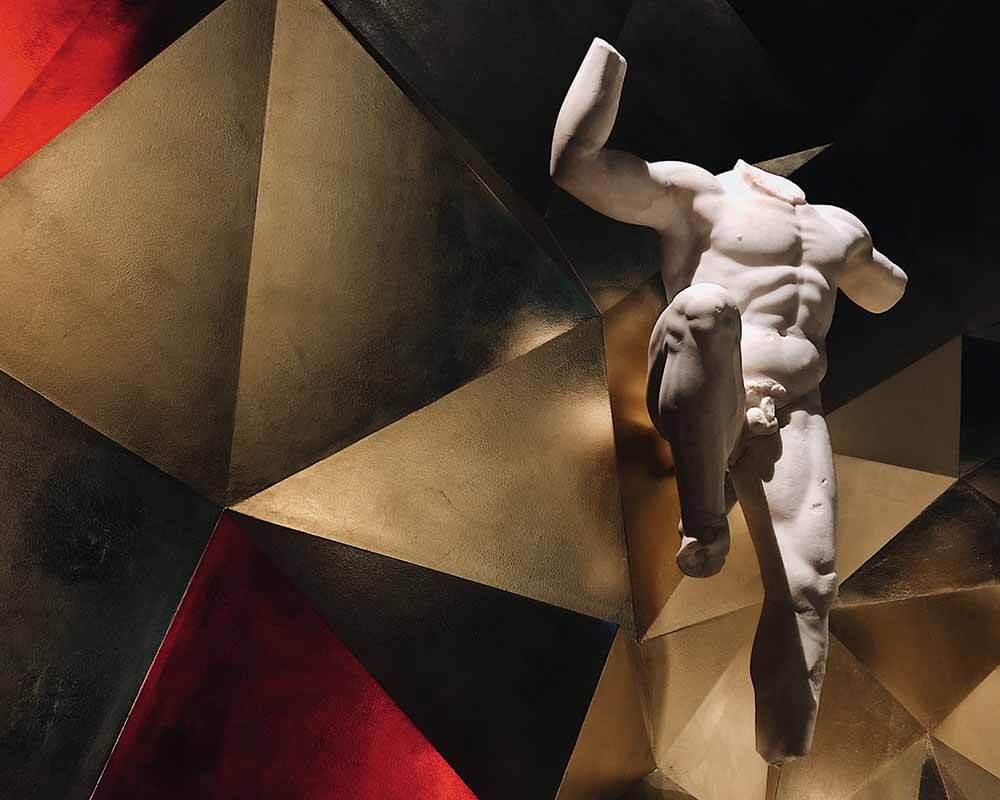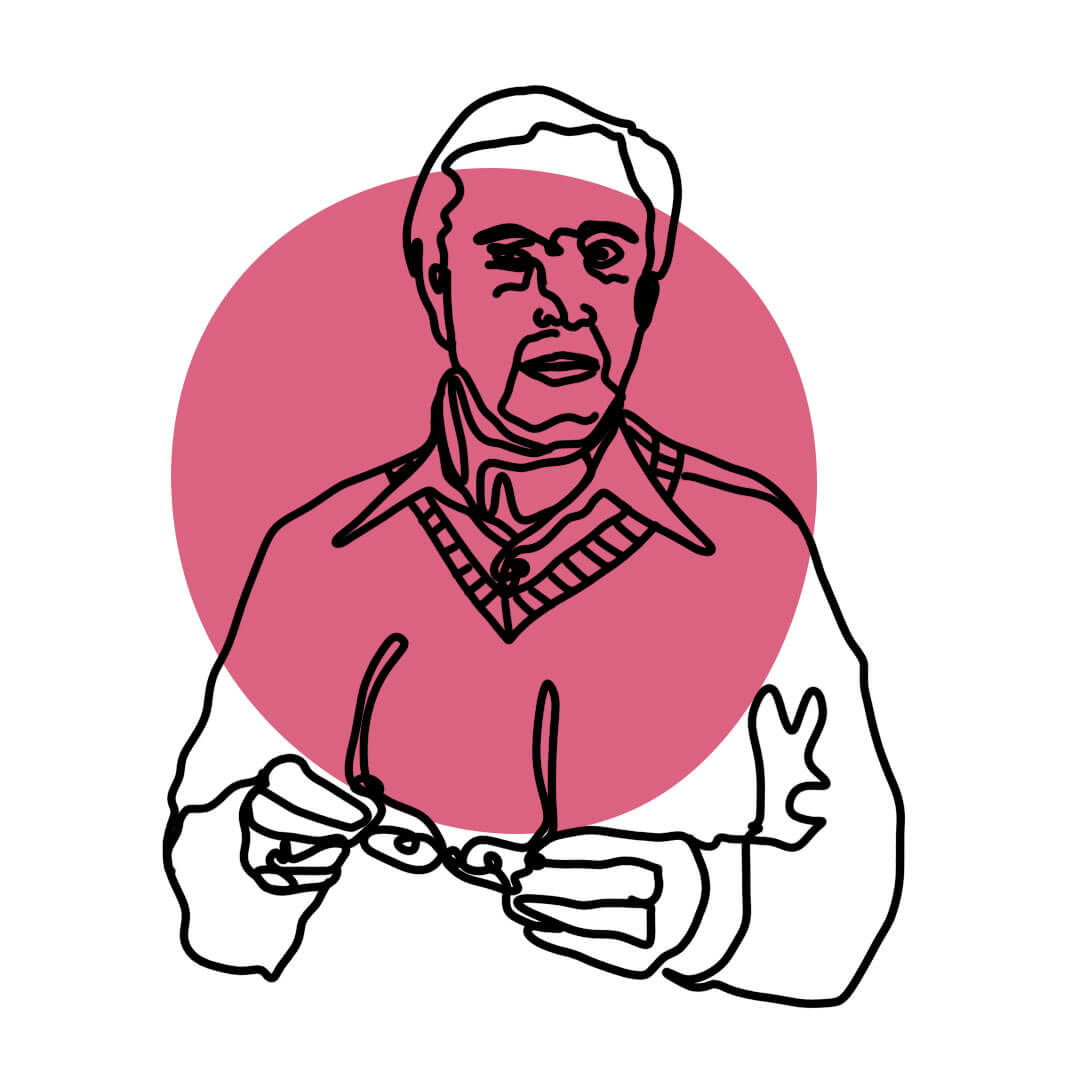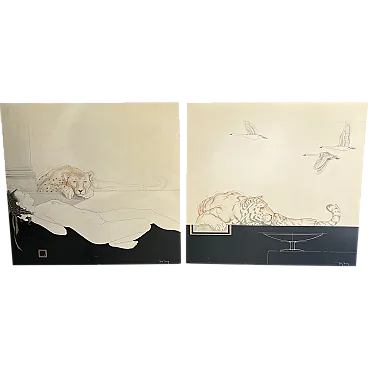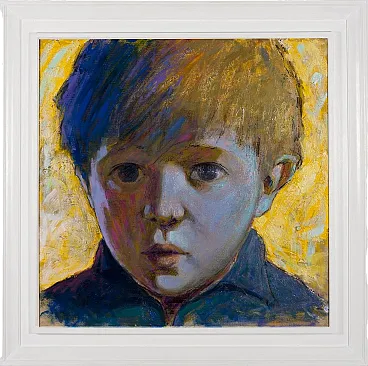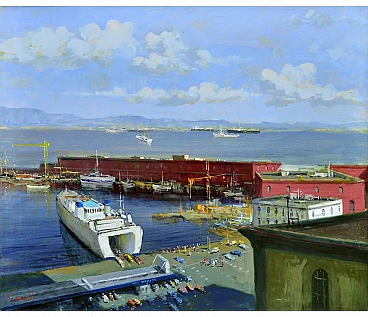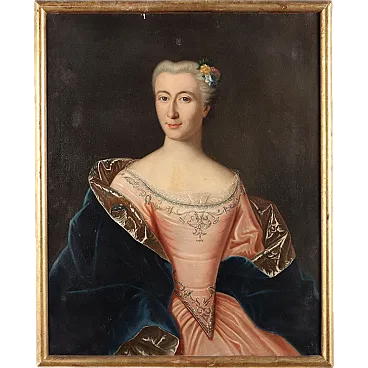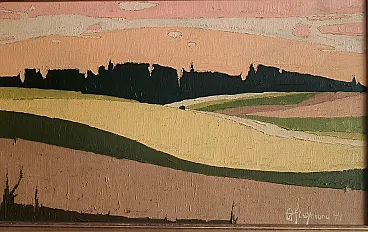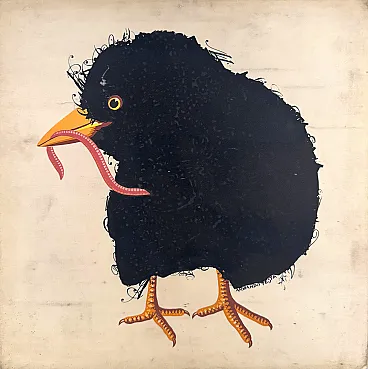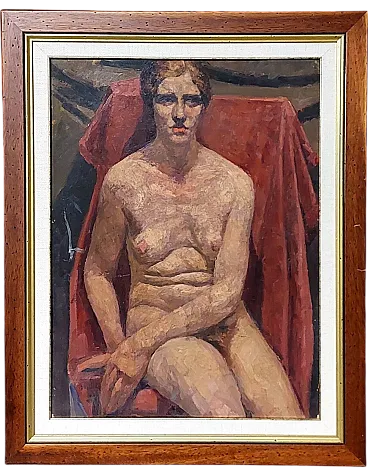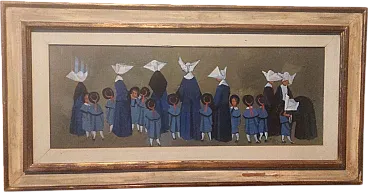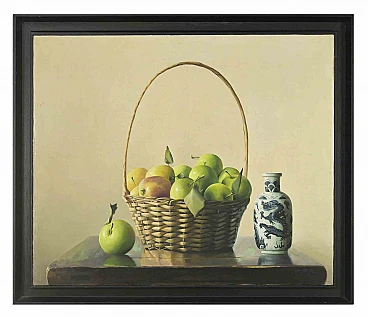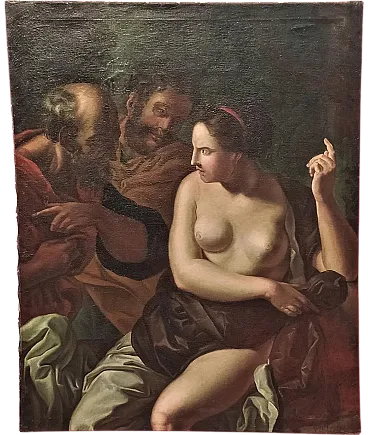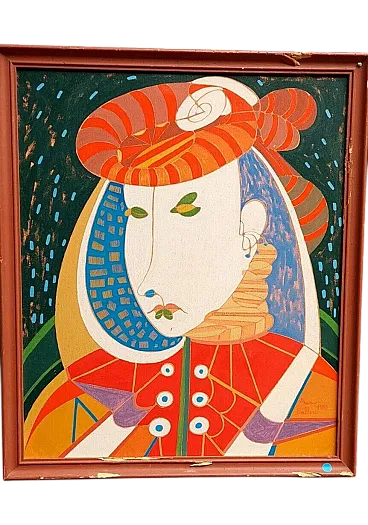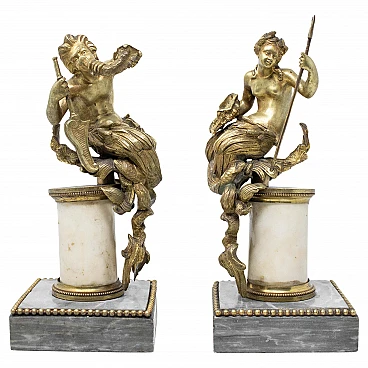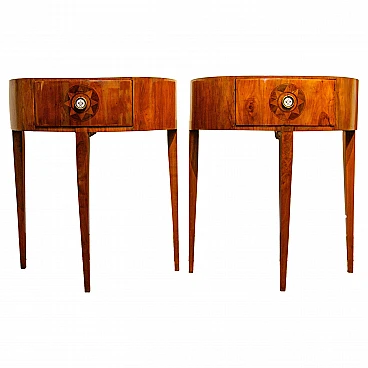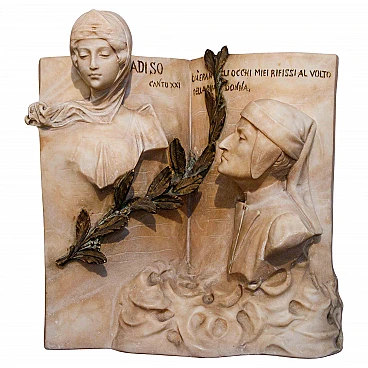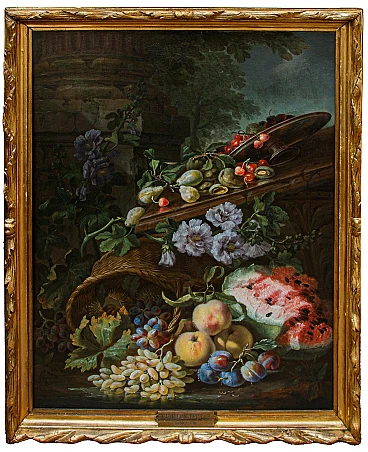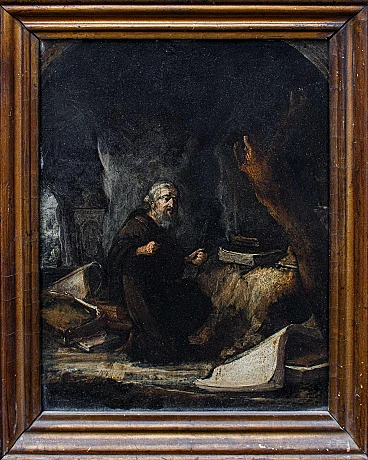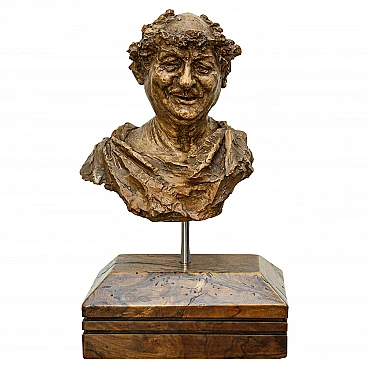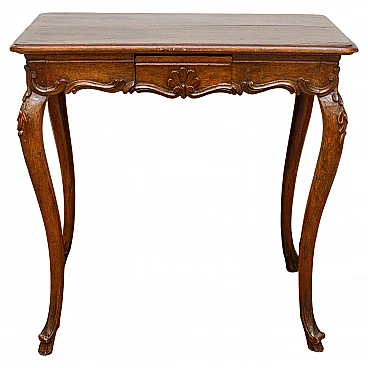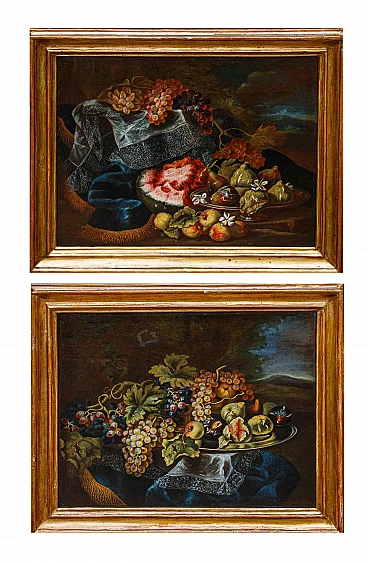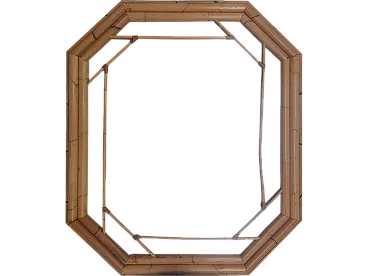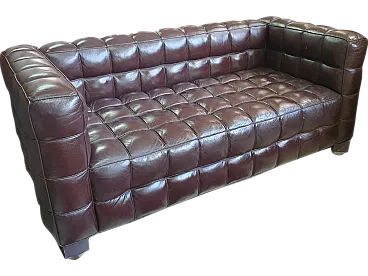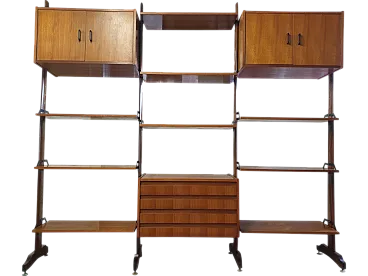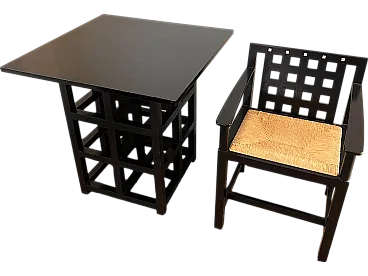Giovanni Ghisolfi (Milan, 1623 - 1683), attr., Capriccio with biblical scene, oil on canvas, 50 x 74 cm, with frame 67 x 90 cm. This work depicts a biblical episode within a background of classical architectural ruins. More precisely, the second miracle of Peter is narrated. In Jaffa lived a seamstress named Tabitha, known for her goodness and charitable works. At a certain point, Tabitha fell ill and died: the other disciples, learning that Peter was in the nearby town of Lydda, sent for him. When he arrived at Tabitha's house, Peter met some other weeping widows, who showed him the clothes that the woman used to make for them. The apostle began to pray, in solitude, in the room where Tabitha had been left, and said to her, "Tabitha, get up!": when he had said these words, the woman resurrected. The sequence of arches flanked by what remains of an Ionic temple, as well as the rocchi and column bases between which the figures juggle, recall compositional solutions typical of Giovanni Ghisolfi. Such elements can be found in the Classical scene with Ruins in Dresden, Gemaldegalerie, or the pair Marina with Ruins and Ruins on the Coast in a private collection, or Dido finds the horse skull pointed out to her by Juno on the spot where she is to found Carthage in the Galleria Sabauda in Turin. In the Apparition of Mercury to Alexander the Great in Hanover (Niedersachsisches Landesmuseum), however, the scaffolding for the reconstruction of buildings can be seen, an expedient also used by Ghisolfi in two other canvases of similar subject matter but unknown location. Giovanni Ghisolfi was the forerunner of a pictorial genre that only achieved extraordinary illustrative success in the 18th century and with Giovanni Paolo Pannini. Ghisolfi was born in Milan in 1623, the son of Giuseppe, an architect from Piacenza who was active in the Lombard capital in the 17th century. The painter was trained in the family circle and the first certain information about his activity occurs when, in 1649, he is mentioned as participating in the creation of triumphal arches and various pictorial decorations for the reception of the Archduchess Marianne of Austria. After moving to Rome around 1650 together with Antonio Busca, he probably took part in Cortona's building sites and began an interesting collaboration with Salvator Rosa, for whom he painted landscapes and architectural views. From this association and from observing one of the pioneers of the genre, Codazzi, the Milanese painter learnt the right way to insert the human presence within the architectural frame: his figures appear loosely executed, often distributed in the foreground, especially in his early maturity. In the Eternal City he certainly dedicated himself to the study of ancient architecture and the drawing of architectural fragments: this illustrative and archaeological bent soon revealed an intimate classicist vein, marked by elegant compositional balances, which can also be traced in the present. From 1659 we find him again in Lombardy, where he tried his hand at decorating religious themes in the chapel dedicated to Saint Benedict in the Certosa di Pavia and in the chapel of Sacro Monte in Varese dedicated to the Presentation in the Temple. Having become a renowned painter, we also find him decorating several palaces of the Milanese nobility, including palazzo Omodei in Cusano Milanino and palazzo Borromeo-Arese in Cesano Maderno and in palazzo Litta-Modignani in Varese. He also worked in Vicenza and Varese where, in 1675, he was commissioned to carry out the decoration of the vault and chancel of San Vittore with The Glory of San Vittore. He died in Milan in 1683 and was buried in the church of S. Giovanni in Conca. Giovanni Ghisolfi, as well as a painter of large compositions with a sacred background, is today also known as a landscape painter and creator of capricci: by capricci is meant when, in painting, elements such as ruins, buildings and various architectural elements are combined together in an often extravagant manner. A sense of classicism emerges from his paintings, rendered through linear compositions with clear colours and diffused light, and a solid architectural setting that make Ghisolfi a forerunner of 18th century Vedutism. Ghisolfi's work would in fact be an important reference for the painter Giovanni Paolo Pannini, who in 1744 would reproduce in his painting of the 'Ruins with the Parable of the Fish' preserved in the Nelson-Atkins Museum in Kansas City a work by Ghisolfi of the same subject preserved in the Almagià collection.

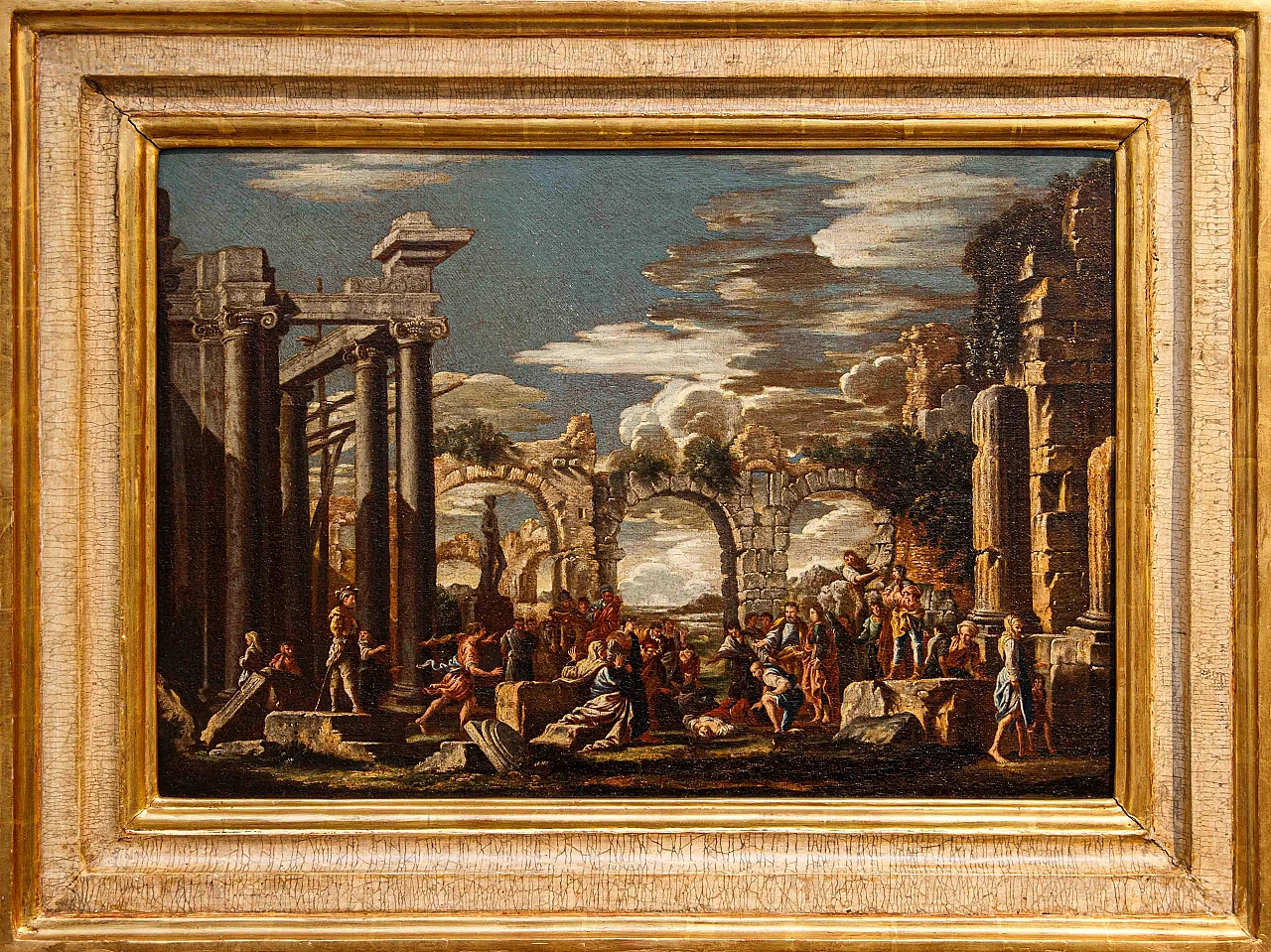
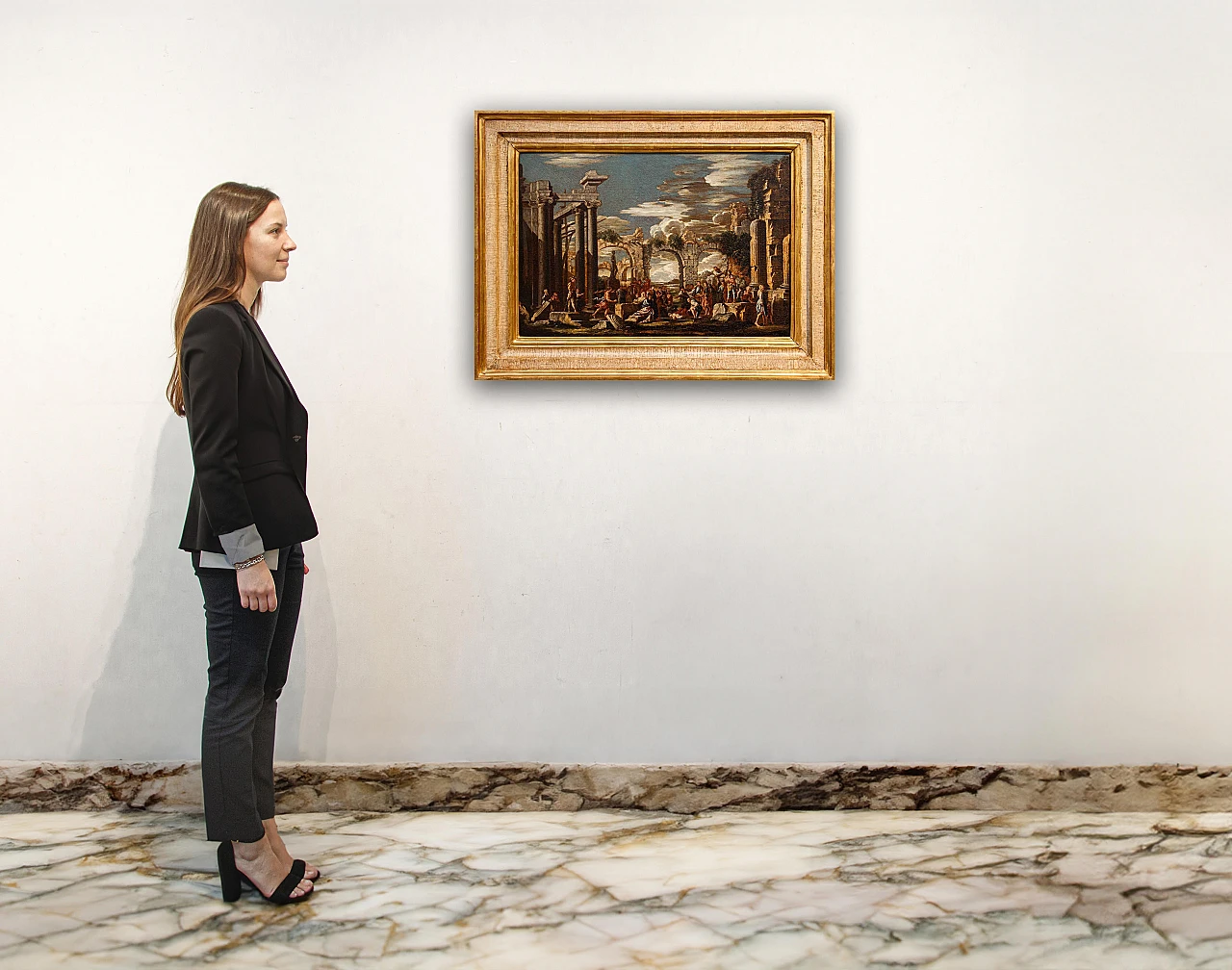
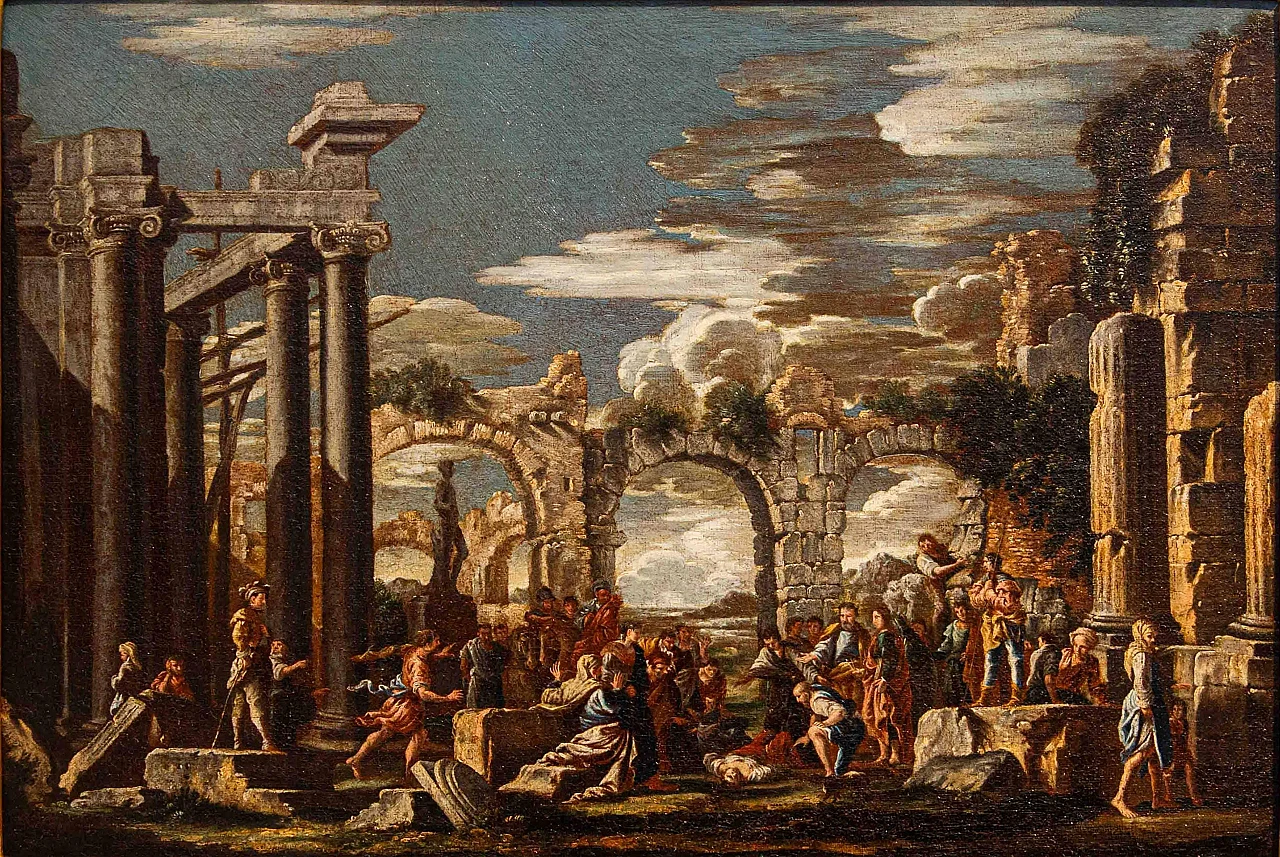
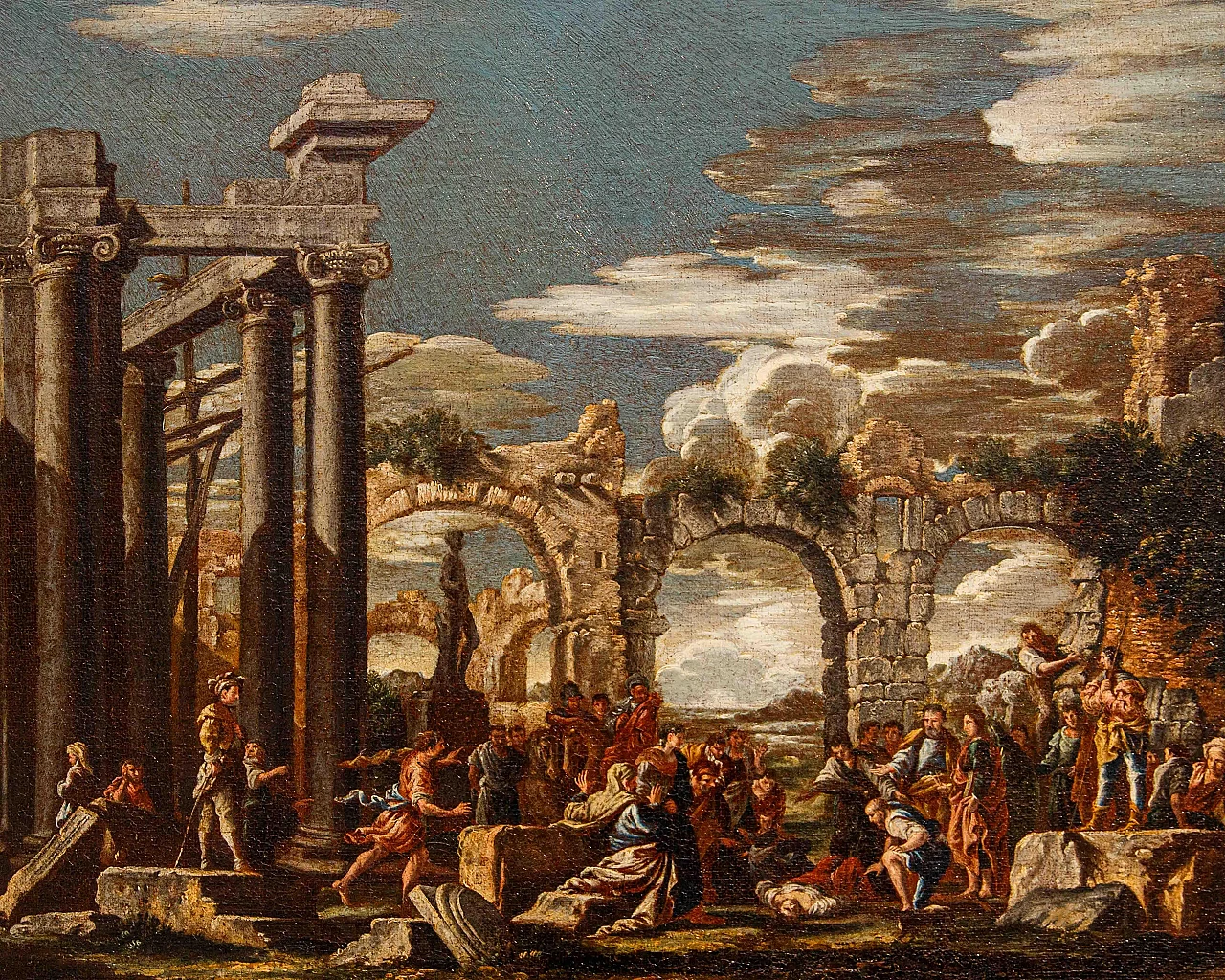
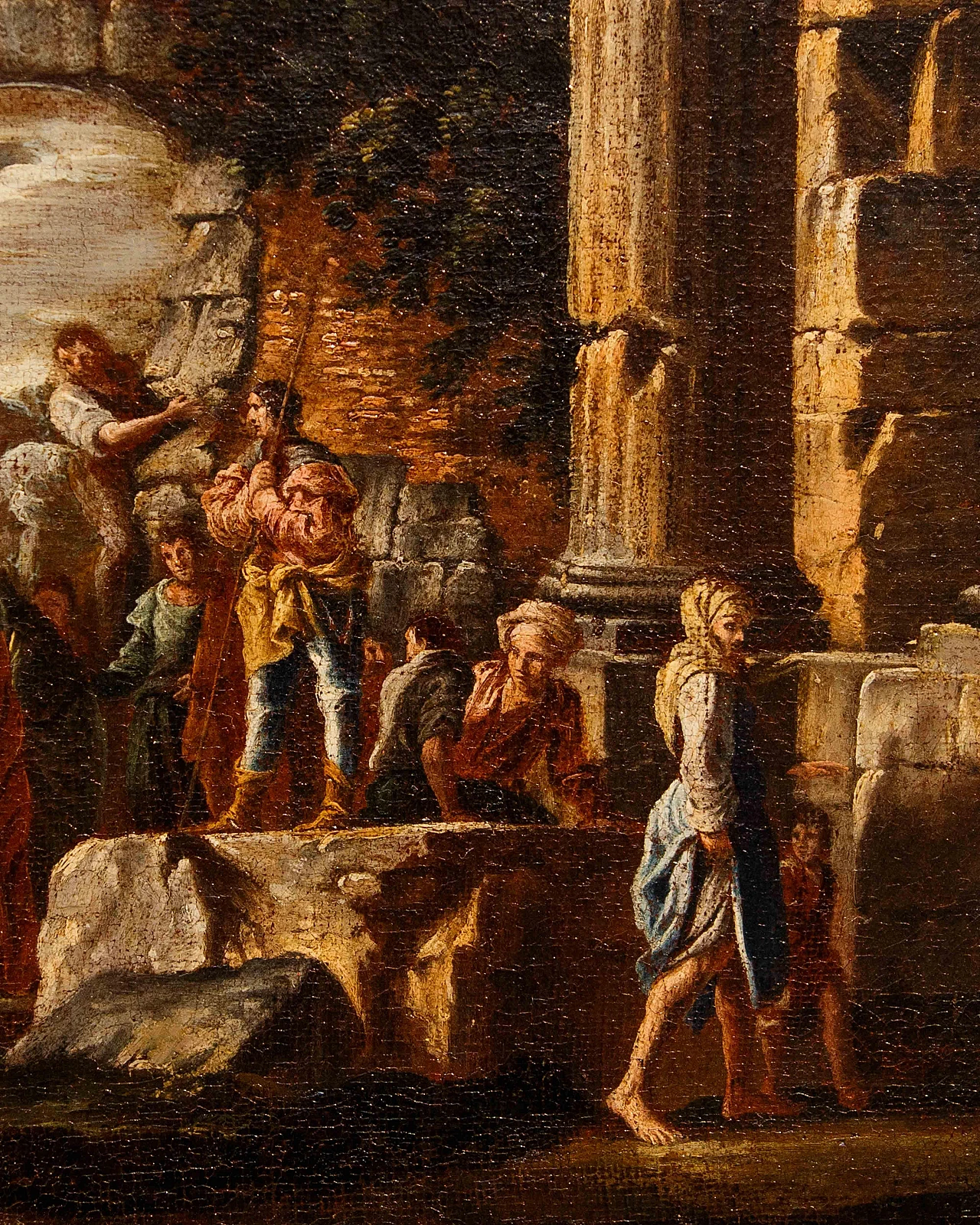
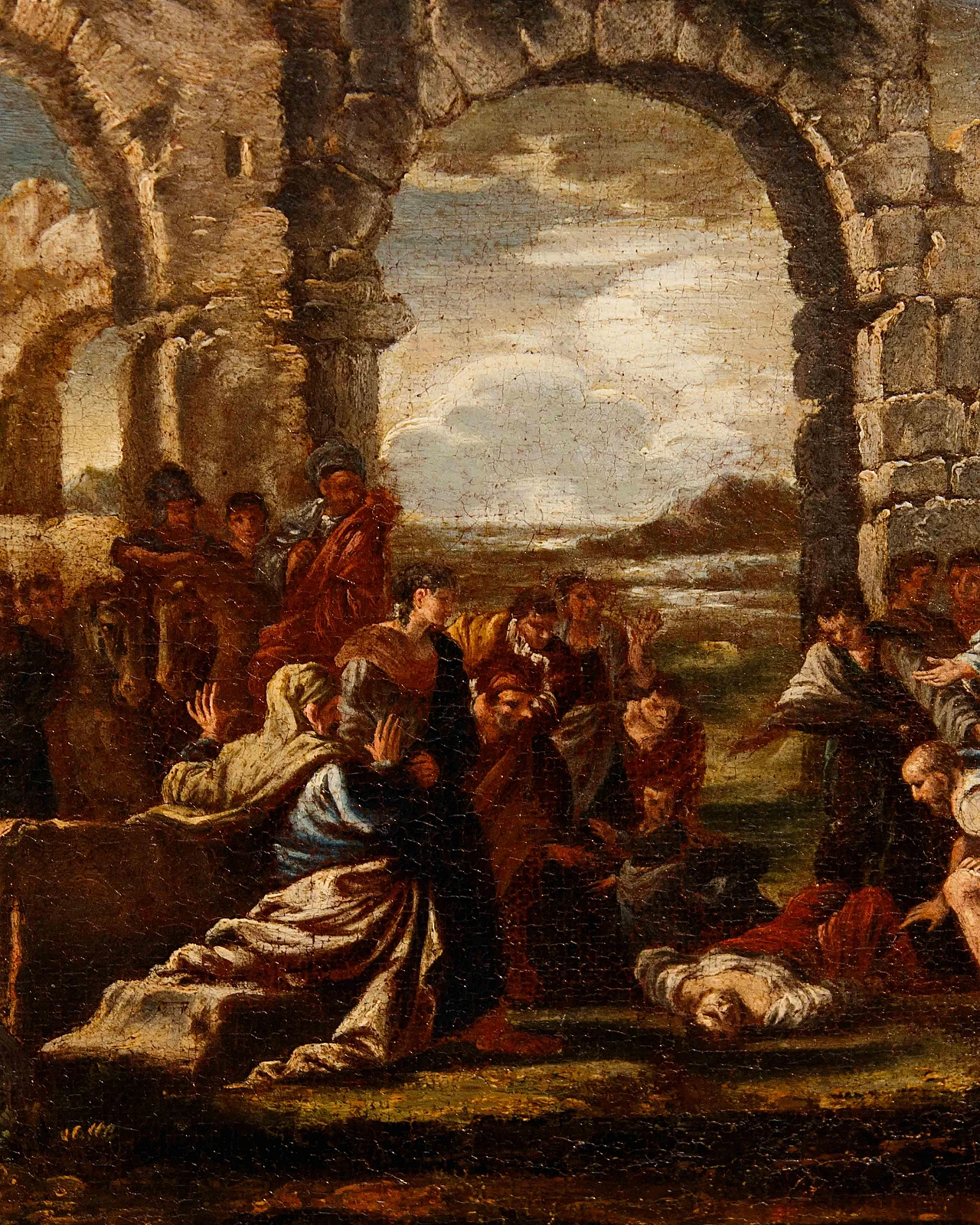
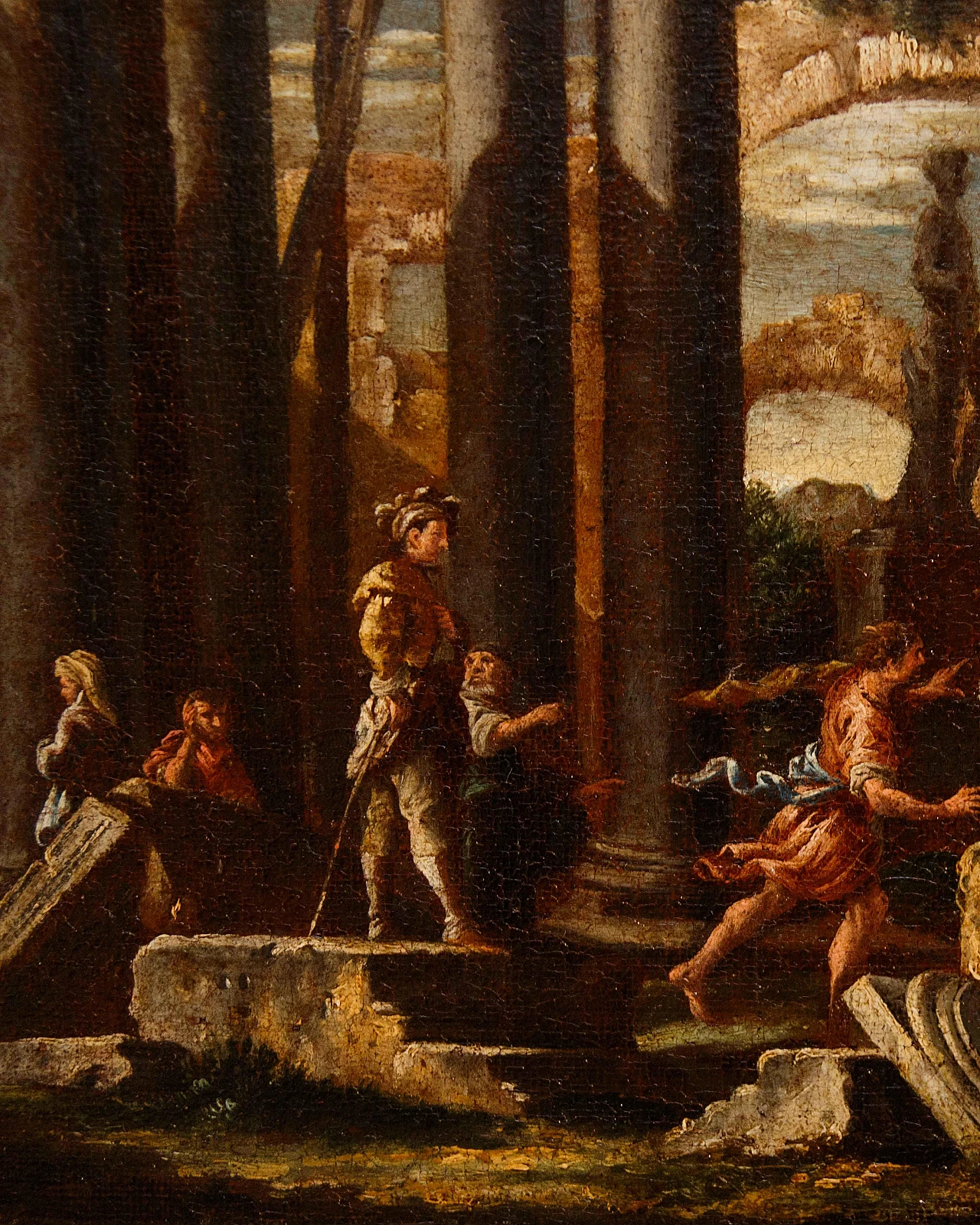
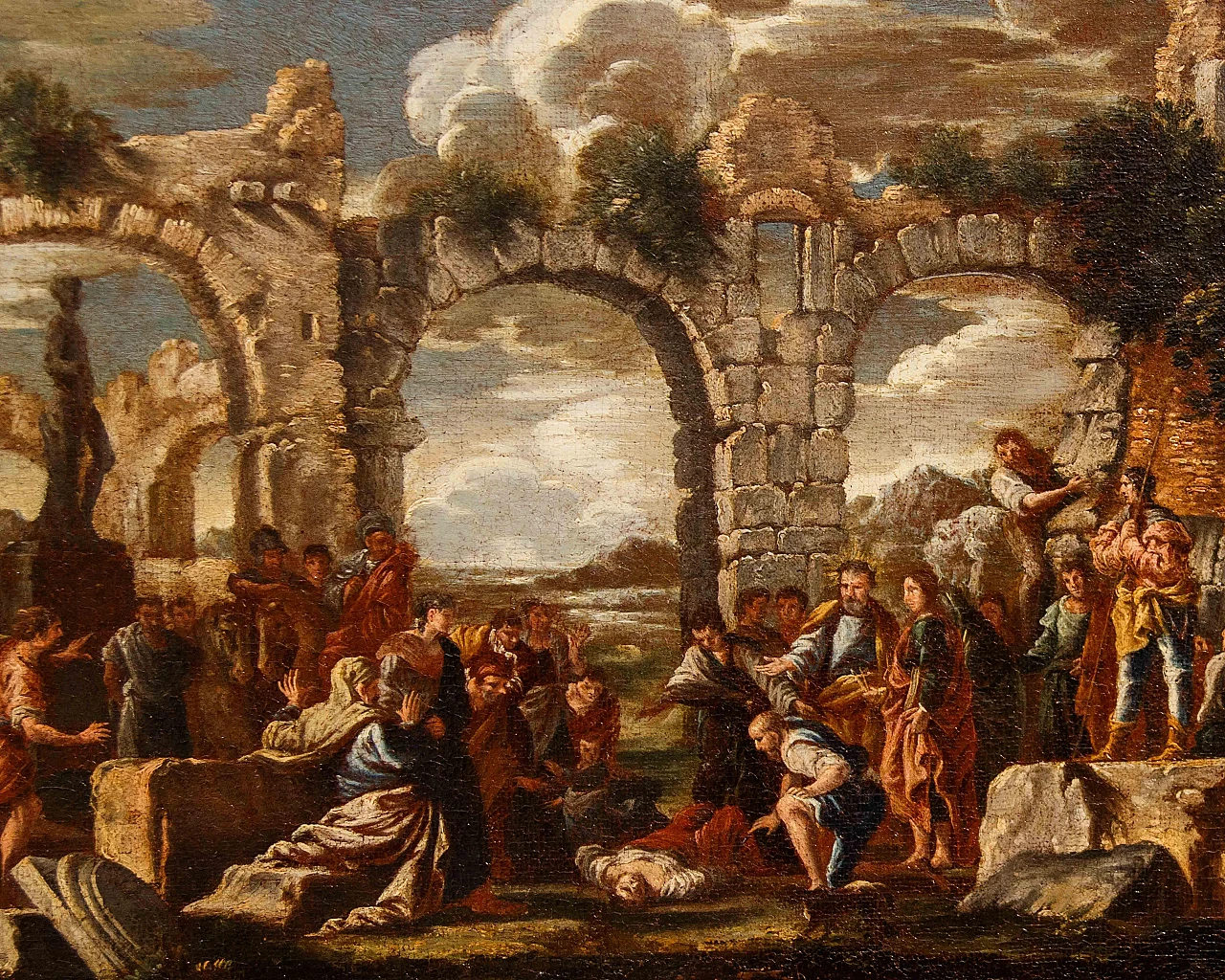
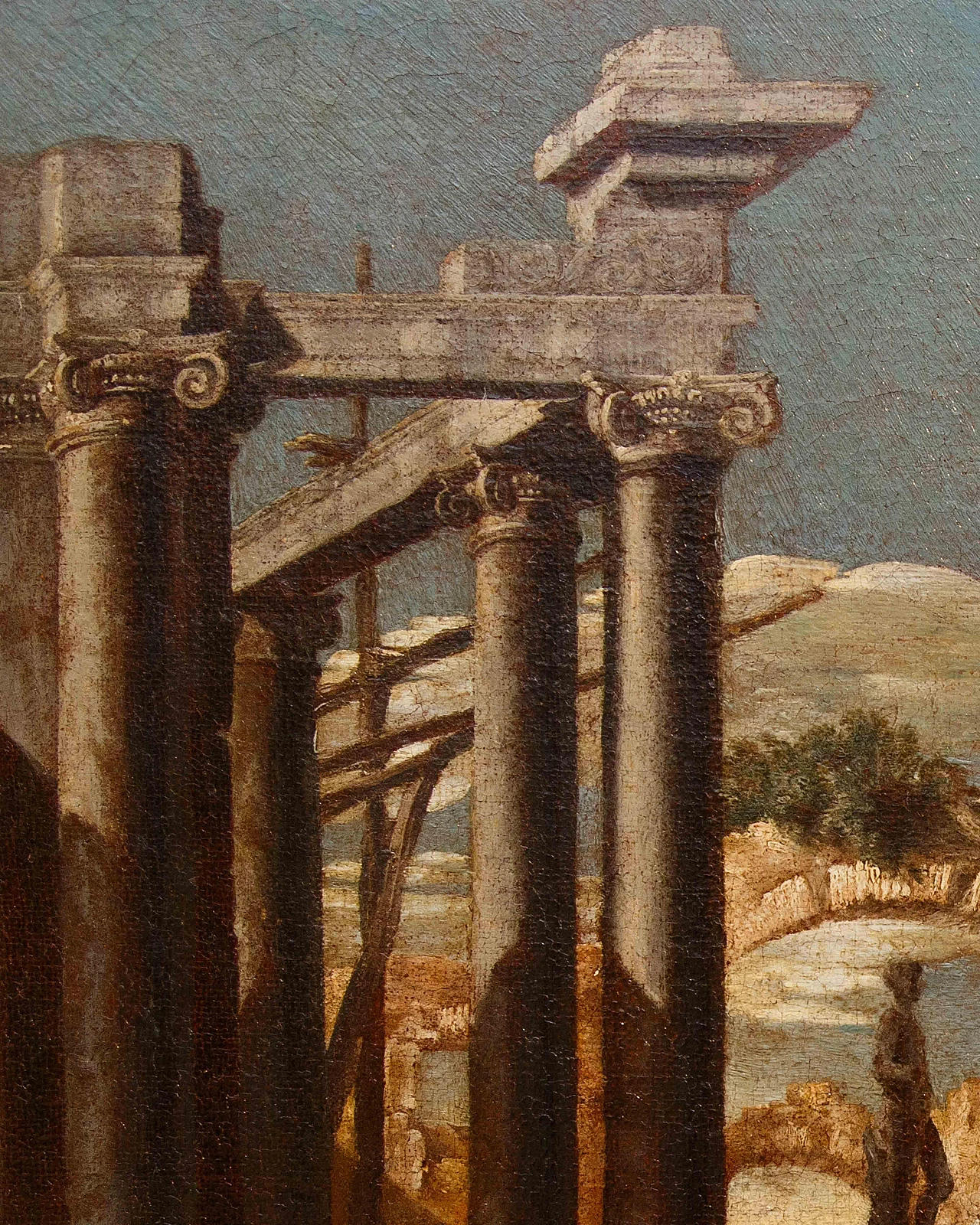
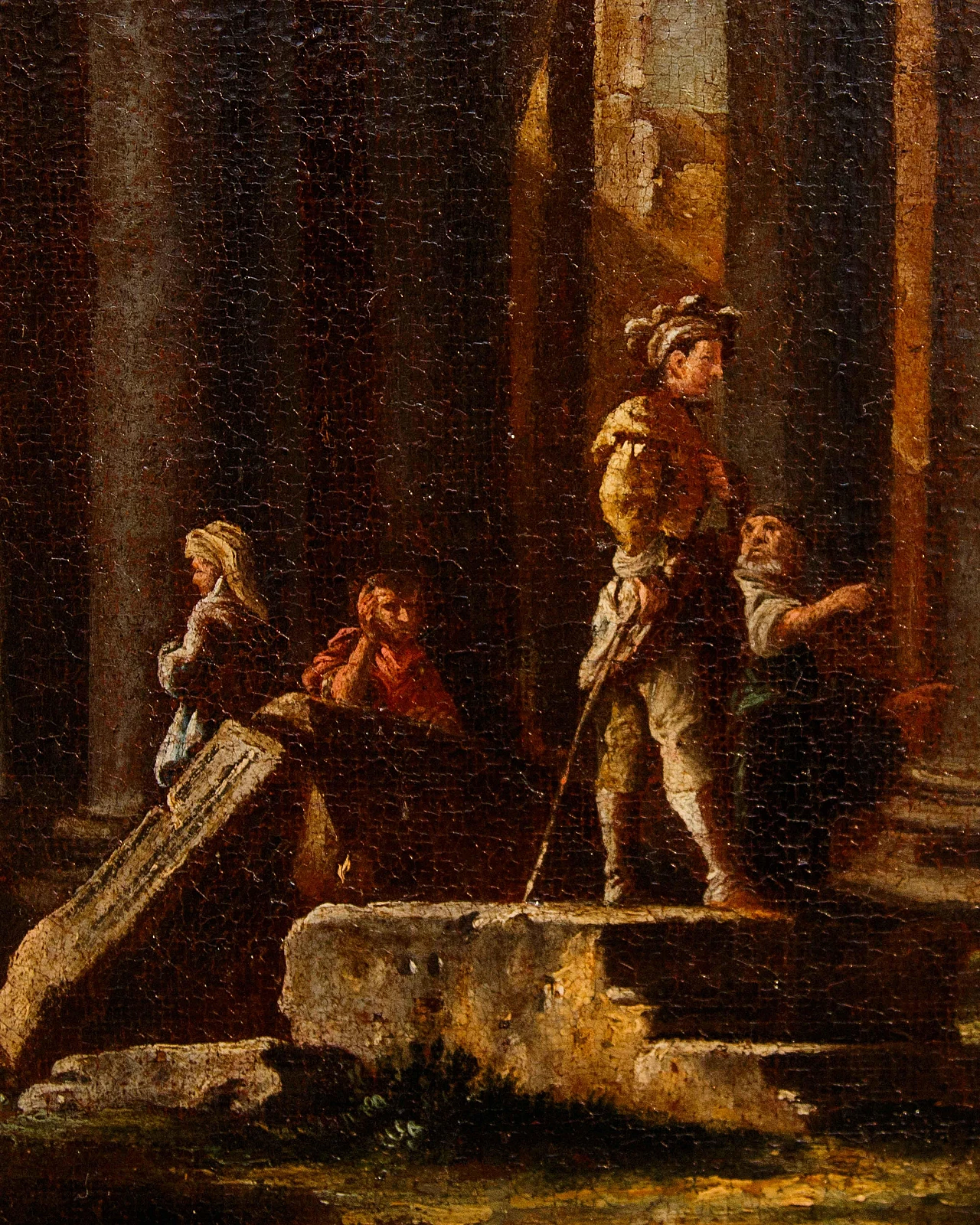
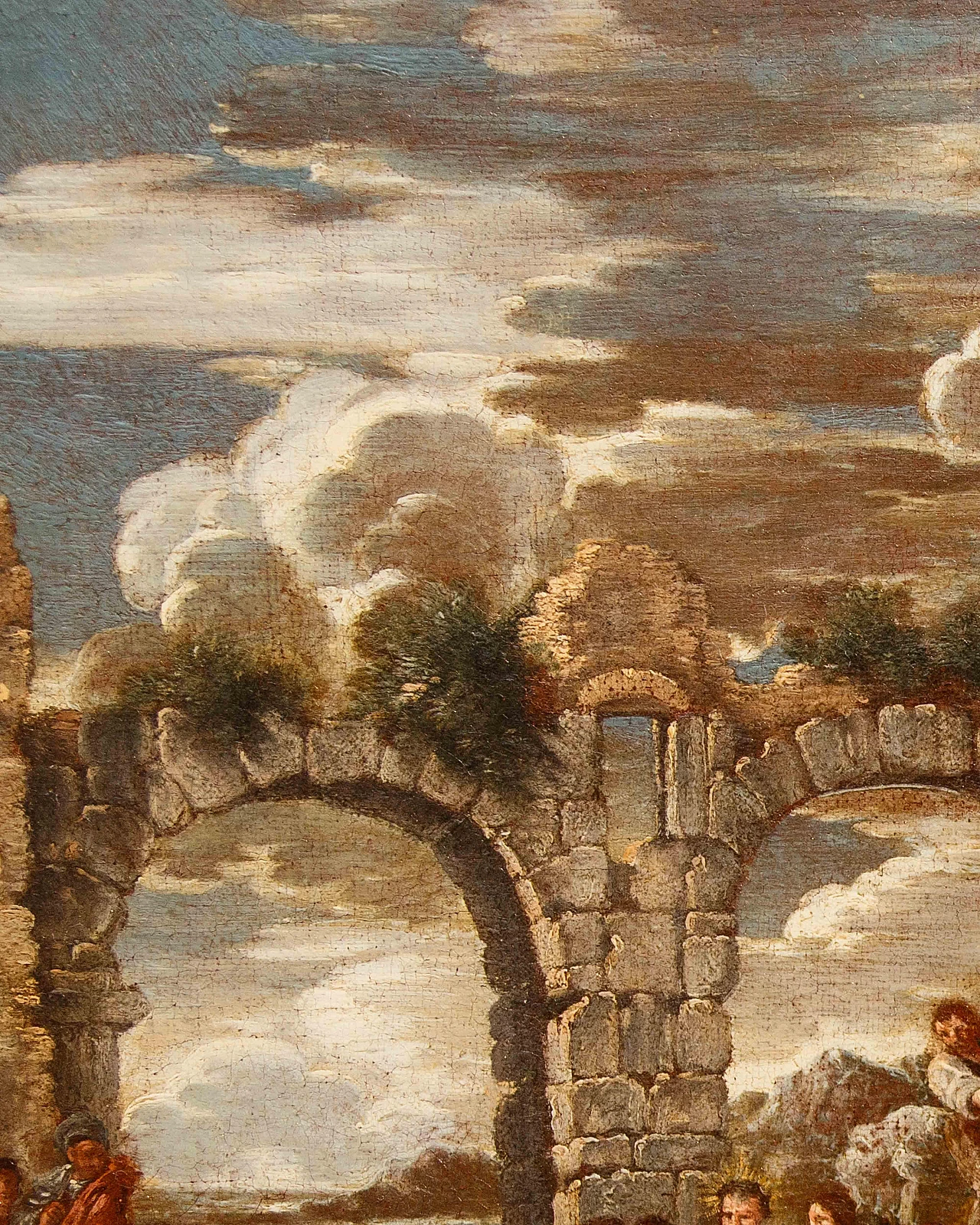
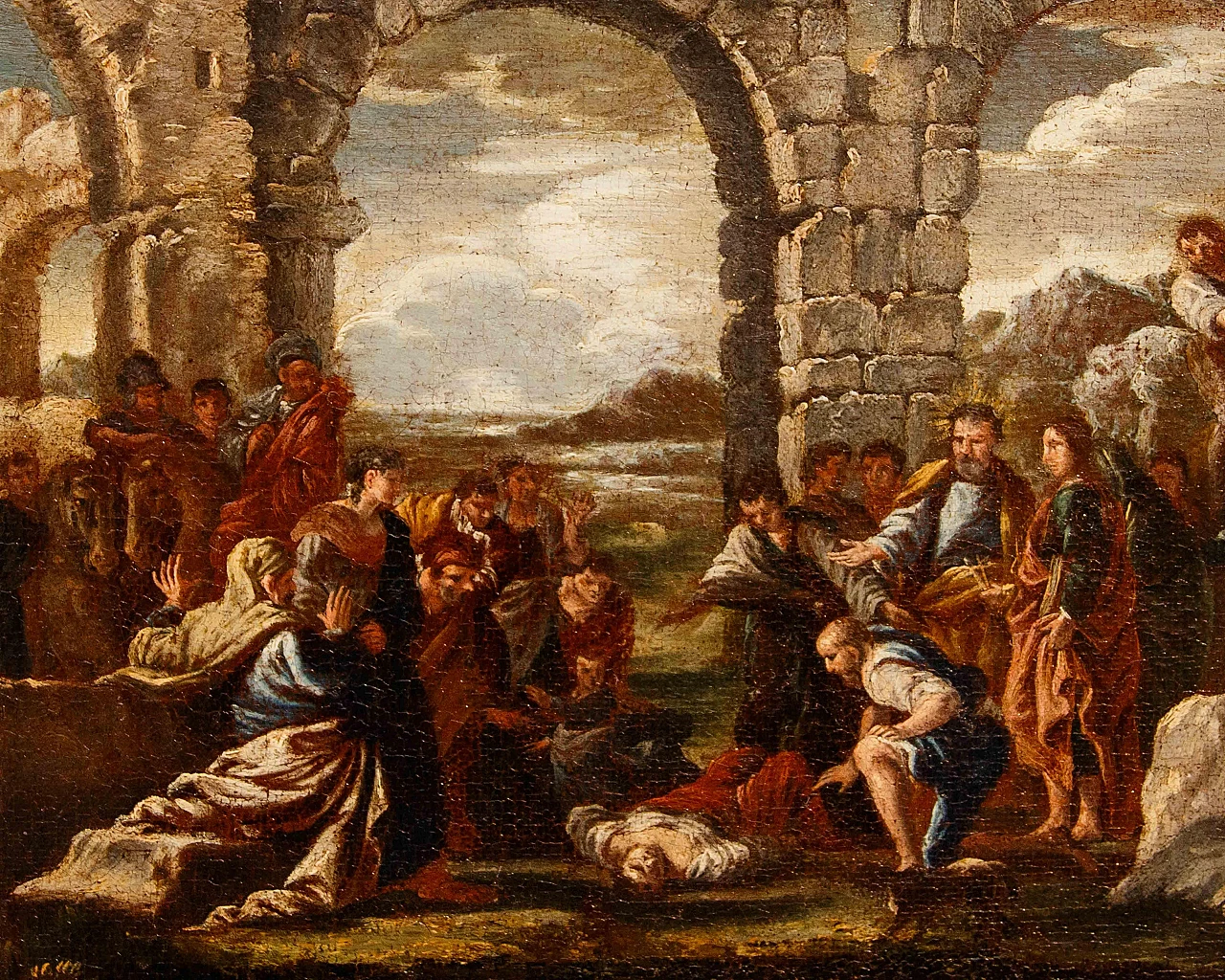
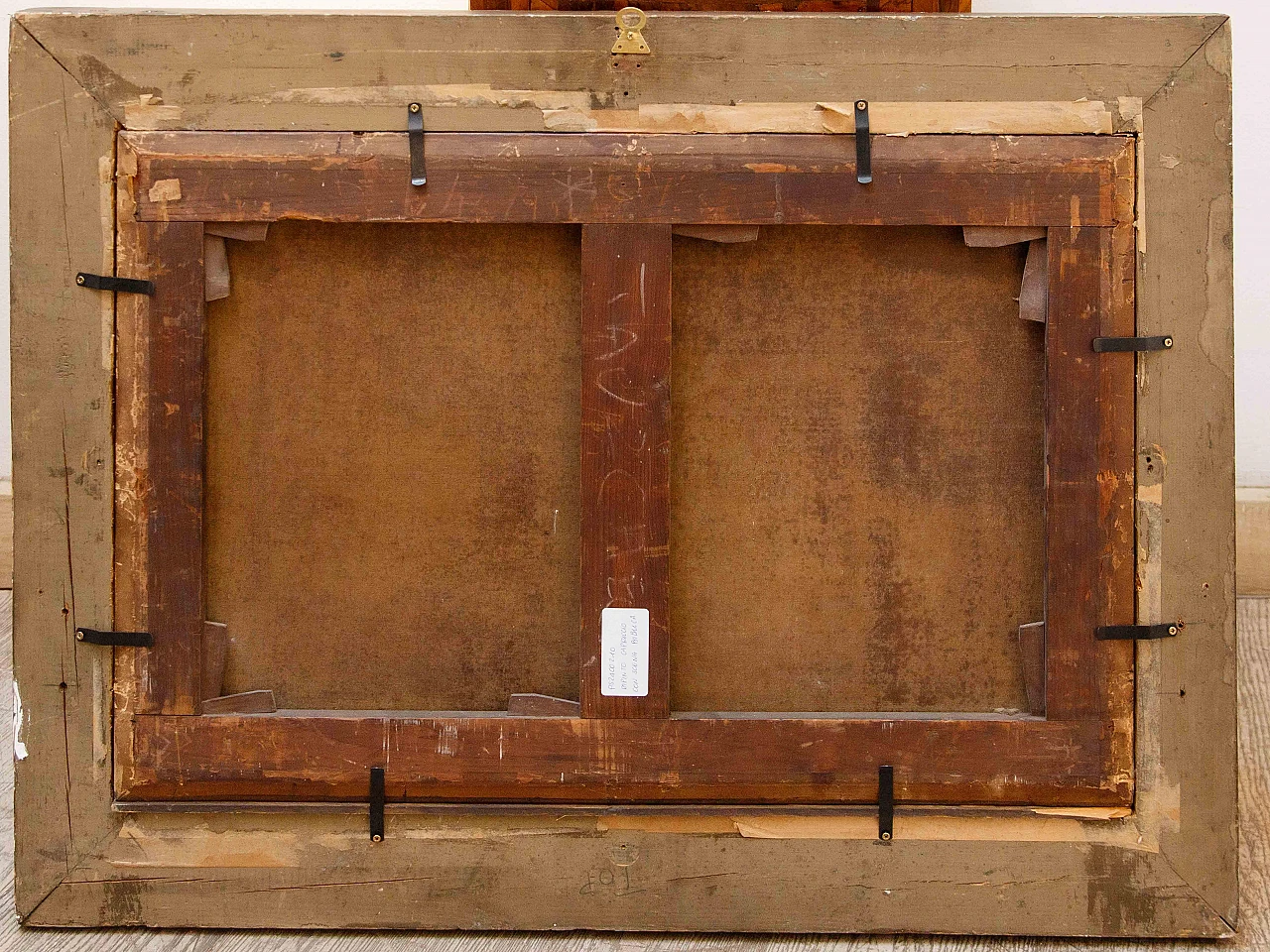
 SILVER Seller in Milano, Italia
SILVER Seller in Milano, Italia
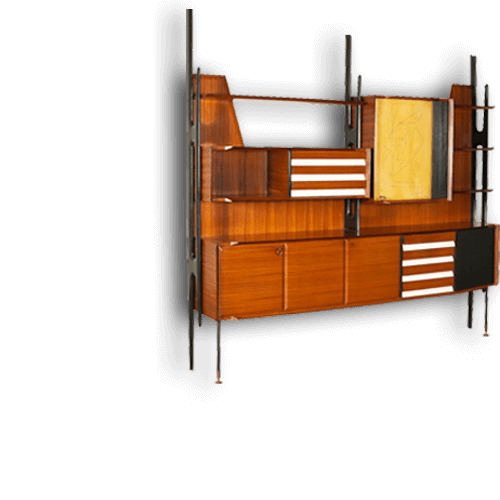
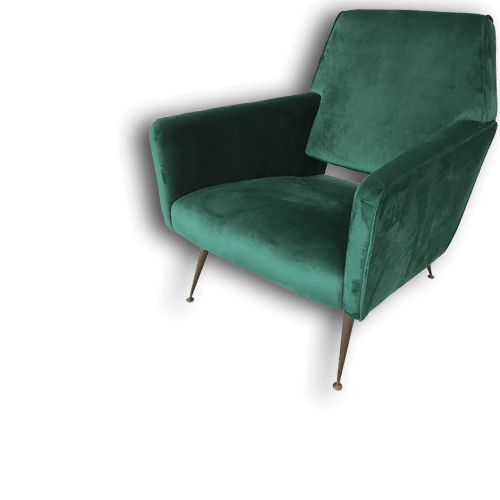



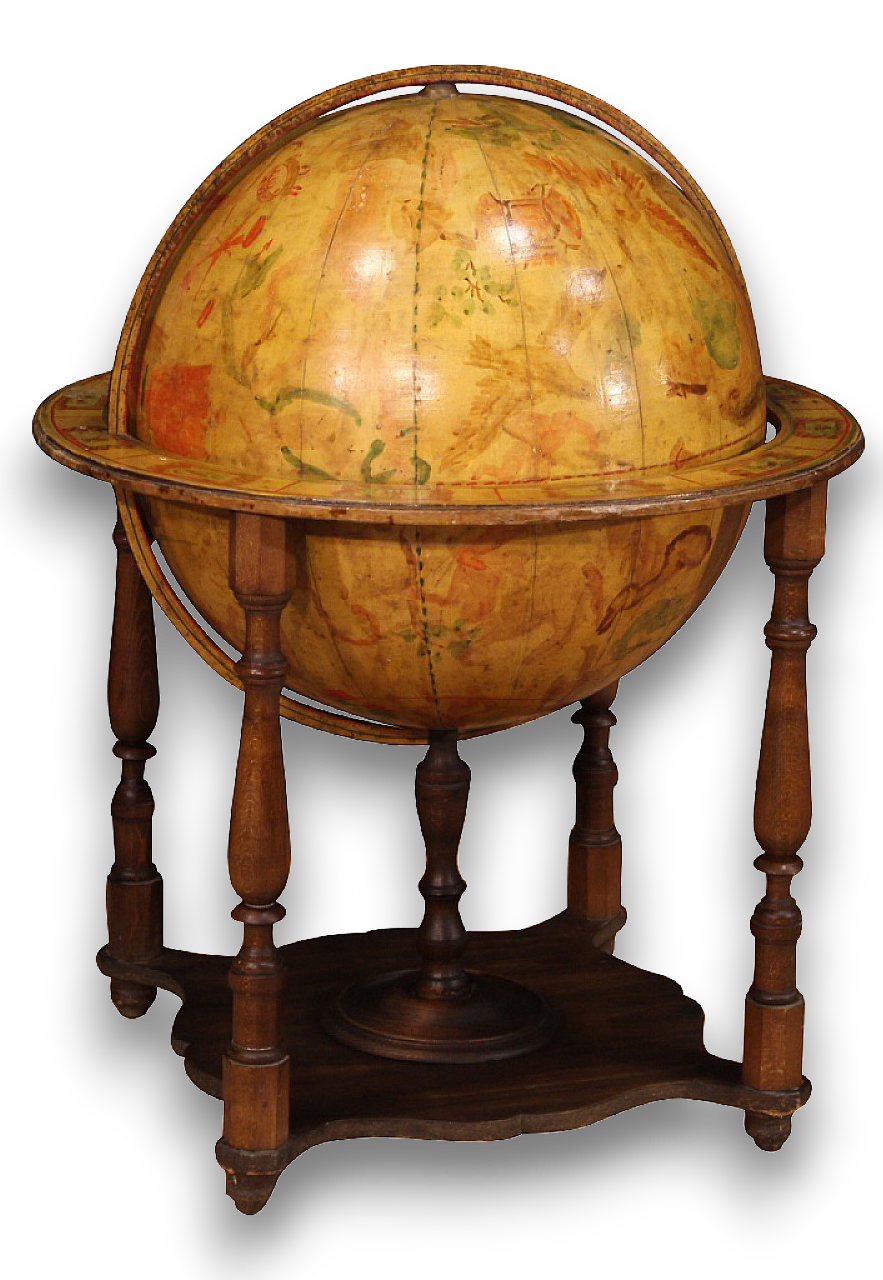
.png)
